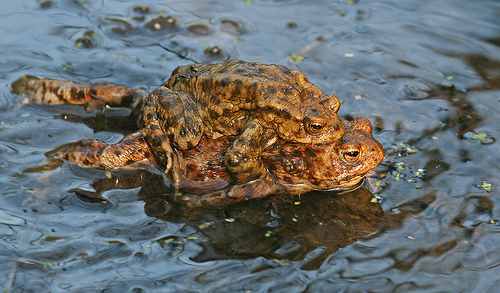What would you do in order to survive?
For the young of the Barnacle Goose, Branta leocopsis, survival means jumping off a cliff within two days of hatching, a drop of fifteen to thirty feet below (Jourdain, 1922) to the jagged rocks that lie in wait.
In a bid to avoid predators, Barnacle Geese and other seabirds such as guillemots and kittiwakes build their nest on mountain cliffs and rocky crags (Ducks Unlimited) that “can be as high as 160 feet above the seashore” (oeillade, 2009) and are not easily accessible. This unusual location keeps away Arctic Foxes and polar bears which are their main predators, thereby providing a safe breeding ground and nesting site.
However, Barnacle Geese are strict vegetarians, and “food supply is rarely in the same area as the nest” (Wildfowl & Wetlands Trust, 2008). The adult geese have no problems flying to a tundra nearby where food is abundant, but for the young hatchlings which are still unable to fly, they have to face one of their toughest challenges in life. This is because, as with all geese, the parents are unable to convey food to them (Jourdain, 1922) and cannot carry them down from the high cliff ledge in their beaks or on their backs. Hence, in order to feed, they have no choice but to literally take a big leap of faith.
Their feathery down and light weight helps to reduce the impact from the great fall. However, it does not end there. In the event that they do survive the fall, they still have to “continue their death-defying migration to the river at the foot of the cliff” (PBS.org) in order to reach their source of food, a journey that is made all the more treacherous by the presence of predators. Parent geese would call out in an attempt to divert the predator’s attention from their vulnerable young, but many helpless young geese still fall prey to their predators.
On the bright side, many goslings do survive against all odds, despite this seemingly impossible “rite” of life *smiles*. This amazing feat of theirs earned them the number one spot on Animal Planet’s Most Extreme Daredevil episode, defeating the eagle, pelican, click beetle and bharal. The following is a heartwarming documentary on the Barnacle Geese from the series Nature. Enjoy!
REFERENCES
Jourdain, F.C.R., 1922. “The Breeding Habits of the Barnacle Goose”. The Auk, Vol. 39, No. 2, pp. 166-171
“Barnacle Goose Facts, Figures, Description and Photo”, article from Ducks Unlimited. Retrieved from http://www.ducks.org/hunting/waterfowlGallery/75/index.html
“The Barnacle Goose”, article by oeillade (2009). Retrieved from http://scienceray.com/biology/zoology/the-barnacle-goose/
“Barnacle Goose”, article from Wildfowl & Wetlands Trust. Retrieved from http://www.wwt.org.uk/learn/fact-files/wetland-wildlife/species-fact-files/barnacle-goose-
“Barnacle Goose”, article from Wildfowl & Wetlands Trust (2008). Retrieved from http://www.wwt.org.uk/support-us/adopt-a-bird/adopter-only/our-feathered-friends/barnacle-goose
“The Best of Nature – 25 Years”, summary of an episode from NATURE series. Retrieved from http://www.pbs.org/wnet/nature/bestofnature/
“NATURE ‘The Best of Nature – 25 Years'” preview summary. Retrieved from http://www.pbs.org/previews/nature-25years/
“The Most Extreme: Daredevils episode recap” on TV.com. Retrieved from http://www.tv.com/the-most-extreme/daredevils/episode/628101/recap.html?tag=episode_recap;recap
Picture:
“Branta leocopsis“. Submitted by Linnea Samila. Creative Commons Attribution ShareAlike 2.5 (Generic). Retrieved from http://www.britannica.com/EBchecked/topic/53602/barnacle-goose
Video:
“Kingdom of the Ice Bear: The Land of Beyond” (1986). Narrated by George Page. Nature. Thirteen/WNET New York. Posted as “The Geese From Sparta” by xerocool101. Retrieved from http://www.youtube.com/watch?v=i4Dhm8FpjC0.



